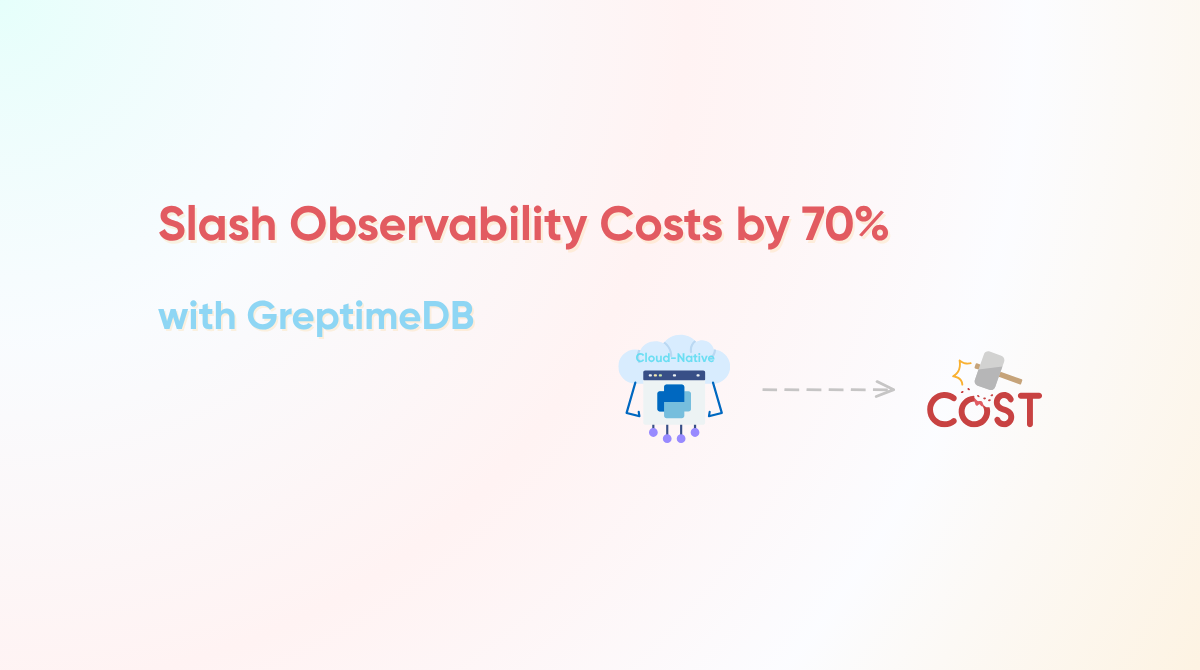
💬 Slack | 🐦 Twitter | 💼 LinkedIn
The observability landscape is evolving beyond traditional keyword matching. Modern applications generate billions of log entries with subtle semantic variations that traditional search misses entirely. GreptimeDB's vector search capabilities bring AI-powered semantic understanding to time-series databases, revolutionizing how we discover and correlate observability data.
Beyond Keyword Matching: The Semantic Challenge
Traditional log search relies on exact keyword matches. When your application logs "connection timeout" vs "network unavailable" vs "socket closed unexpectedly," conventional search treats these as completely different events. Human operators know they're related – now your database does too.
Vector search transforms text into numerical representations that capture semantic meaning. Similar concepts cluster together in vector space, enabling intelligent similarity queries that traditional databases simply cannot perform.
GreptimeDB's Vector Search Architecture
Version 0.10 integrates the VSAG vector search library from Ant Group, bringing enterprise-grade vector capabilities to time-series data. This isn't a bolt-on feature – it's deeply integrated with GreptimeDB's columnar storage for optimal performance.
Embedding Integration
from sentence_transformers import SentenceTransformer
# Initialize the model
model = SentenceTransformer('flax-sentence-embeddings/all_datasets_v3_mpnet-base')
# Convert text to vectors
descriptions = [row['description'] for row in data]
embeddings = model.encode(descriptions)Database Schema
CREATE TABLE IF NOT EXISTS news_articles (
title STRING FULLTEXT,
description STRING FULLTEXT,
genre STRING,
embedding VECTOR(768),
ts timestamp default current_timestamp(),
PRIMARY KEY(title),
TIME INDEX(ts)
);The 768-dimensional vector type stores semantic representations alongside traditional structured data, enabling hybrid queries that combine time-series filtering with semantic similarity.
Semantic Search in Action
Vector similarity search uses mathematical distance calculations to find related content:
-- Find semantically similar articles
SELECT title, description, genre,
vec_dot_product(embedding, :search_embedding) AS score
FROM news_articles
ORDER BY score DESC
LIMIT 10;The results reveal the power of semantic understanding. Searching for "China Sports" returns:
- Yao Ming basketball articles
- Olympic coverage
- F1 racing in Shanghai
- Computer technology stories (related through business context)
Traditional keyword search would miss most of these connections, focusing only on exact text matches.
Observability Use Cases
Intelligent Incident Response
When a critical error occurs, vector search identifies similar historical incidents even when error messages vary:
-- Find similar error patterns
SELECT error_message, service_name, timestamp,
vec_cosine_similarity(error_embedding, :current_error) as similarity
FROM error_logs
WHERE similarity > 0.8
ORDER BY similarity DESC, timestamp DESC;This enables faster root cause analysis by surfacing relevant historical context that keyword search would miss.
Log Clustering and Anomaly Detection
Vector representations enable automatic log clustering:
- Group similar error types together
- Identify outlier events that don't fit established patterns
- Track how error patterns evolve over time
Application Performance Correlation
Combine vector search with time-series analytics:
-- Find performance issues with similar characteristics
SELECT service, avg(response_time), count(*) as incidents
FROM performance_logs
WHERE vec_dot_product(symptom_embedding, :target_embedding) > 0.7
AND timestamp > now() - INTERVAL '7 days'
GROUP BY service
ORDER BY avg(response_time) DESC;Performance Characteristics
Vector operations in GreptimeDB are optimized for observability workloads:
Storage Efficiency
- Vector compression reduces storage overhead
- Columnar layout enables efficient similarity computations
- Integration with time-series partitioning maintains query performance
Query Performance
- Parallel vector operations leverage modern CPU instruction sets
- Approximate similarity search for massive datasets
- Hybrid indexing combines vector and traditional indexes
Advanced Vector Operations
GreptimeDB supports multiple vector similarity functions:
-- Dot product similarity
vec_dot_product(vector1, vector2)
-- Cosine similarity
vec_cosine_similarity(vector1, vector2)
-- Euclidean distance
vec_l2_distance(vector1, vector2)Each function suits different use cases and data characteristics.
Real-World Implementation Strategy
Data Pipeline Integration
- Extract text features from logs, metrics labels, and trace data
- Generate embeddings using pre-trained models
- Store vectors alongside traditional observability data
- Query using hybrid vector + time-series filters
Model Selection
- General purpose: sentence-transformers models
- Domain specific: Fine-tuned models for your application domain
- Multilingual: Support for international deployments
The Future of Intelligent Observability
Vector search represents a fundamental shift from reactive to proactive observability. Instead of waiting for exact matches, systems can now:
- Predict similar failures before they occur
- Automatically correlate related events across services
- Learn from historical patterns to improve future detection
GreptimeDB's vector capabilities position it uniquely in the observability landscape – combining traditional time-series performance with AI-powered semantic understanding.
Ready to unlock semantic observability? GreptimeDB's vector search transforms how you understand and correlate observability data. Start exploring intelligent similarity queries today.
About Greptime
GreptimeDB is an open-source, cloud-native database purpose-built for real-time observability. Built in Rust and optimized for cloud-native environments, it provides unified storage and processing for metrics, logs, and traces—delivering sub-second insights from edge to cloud —at any scale.
GreptimeDB OSS – The open-sourced database for small to medium-scale observability and IoT use cases, ideal for personal projects or dev/test environments.
GreptimeDB Enterprise – A robust observability database with enhanced security, high availability, and enterprise-grade support.
GreptimeCloud – A fully managed, serverless DBaaS with elastic scaling and zero operational overhead. Built for teams that need speed, flexibility, and ease of use out of the box.
🚀 We’re open to contributors—get started with issues labeled good first issue and connect with our community.
